It’s easy to forget about garden tool maintenance with all the other pressing gardening tasks. The end of the season can be particularly pressing when your goal is getting in the harvest and just taking a rest. Before you put your garden to bed for the season, though, make some time for the important task of cleaning and maintaining your tools.
Jump to:
- Why is Cleaning Garden Tools Important?
- Daily Garden Tool Cleaning During the Growing Season
- How to Clean Your Garden Tools for End Of Season Storage
- Blast Off First Layer Mud and Dirt
- Soak Off Stubborn Second Layer Grime
- Disinfect and Stop the Spread
- Remove the Rust
- Sharpen Cutting and Working Edges
- Handle Care Matters, Too
- Tighten Moving Parts
- Oil Tool Surfaces
- Storing Your Cleaned and Cared-For Garden Tools
- Where to Store Garden Tools
- How to Store Garden Tools
- Good Garden Tool Care Saves Time and Money
Why is Cleaning Garden Tools Important?
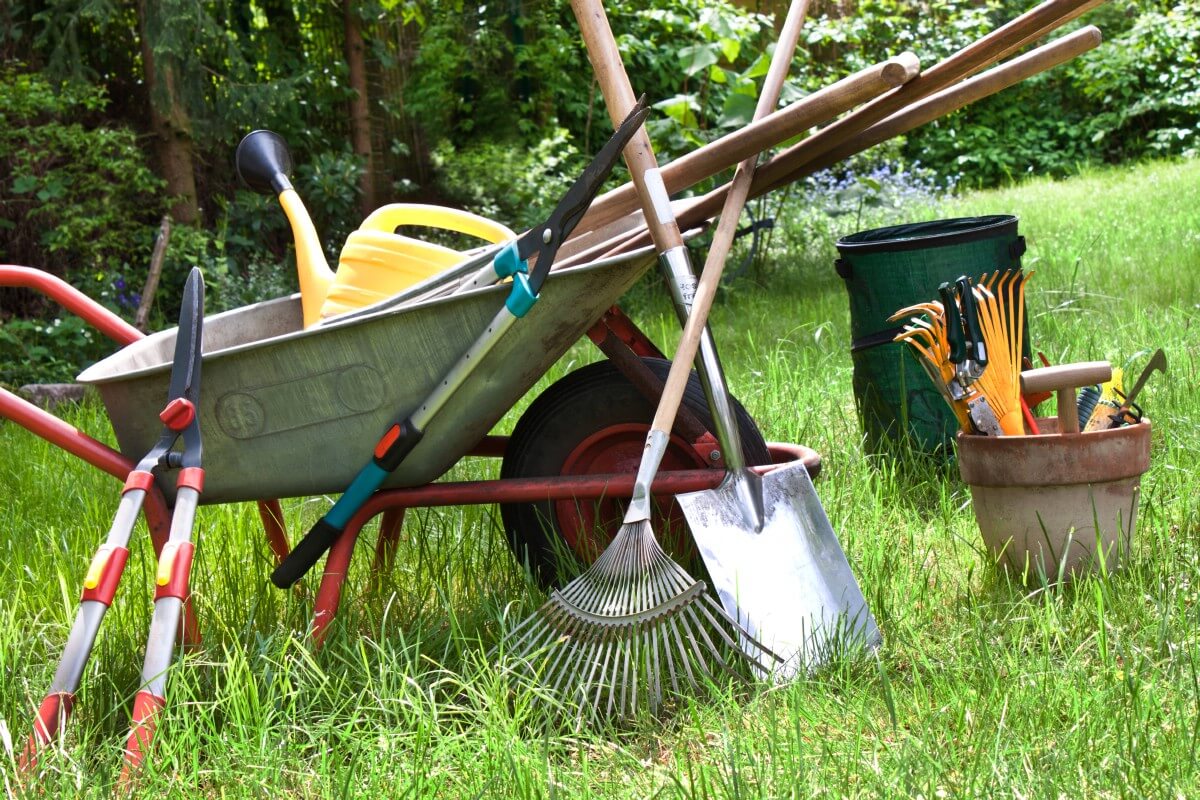
Cleaning your garden tools serves several functions.
It helps prevent the spread of disease and funguses between plants and between seasons.
Cleaning maintains your tools’ usefulness and ensures their best performance—which in turn makes the work of gardening easier and lessens the wear and tear on you, too.
Good cleaning and maintenance extend the life of your garden tools and that’s important because good tools do not come cheap. Maximizing the lifespan of your shovels, rakes, hoes, brush cutters, pruners or secateurs, trowels, weeders, and so on saves a lot of money by deferring replacement costs.
Proper storage matters, too. Good storage matters are just as much as good cleaning and maintenance. The right storage place and the right conditions prevent degradation from rust and issues like bowing, warping, and breakage. Keeping garden tools out of the elements when not in use is essential to long life and high function.
Now that we’re all convinced, let’s take a look at some good cleaning, maintenance, and storage routines to get the most out of your garden tools.
Daily Garden Tool Cleaning During the Growing Season

It’s wise to make a simple cleaning routine part of your regular garden chores throughout the growing season. This is the time when fungus and disease can spread the quickest. It’s also a time when it’s easy to take cleaning for granted—because we are using the tools day to day and dirt is dirt, it is easy to think it doesn’t matter that much.
Your daily garden tool cleaning routine does not have to be as cumbersome or extensive as that which you will do when prepping your garden tools for end-of-season storage.
First, use your garden hose to spray off the bulk of the day’s dirt and grime. It’s also a good idea to give your tools a quick sanitizing dip or spray. A bleach-water solution of nine cups of water mixed with one cup of bleach in a bucket is a fast and easy sanitizing solution. Or, you can keep a handy spray bottle well-labeled with a 9:1 water to bleach solution for a quick end-of-day sanitizing spritz. Air dry after applying.
Full strength white vinegar is another good and less caustic sanitizer for garden tools that is safer around pets and children. Keep a bucket on hand (labeled) for a quick dip or soak and let the tool air dry. Do note that you should never mix bleach and vinegar.
If you are fighting issues of fungus, mildew, or disease in your garden, bring your bucket of vinegar or bleach solution along with you so you can quickly dip your tools between plants and limit the spread of disease.
One other popular garden tip for daily cleaning and maintenance is to keep a pail full of sand mixed with a cup of vegetable oil on hand. After cleaning and drying, push your tools down into the oily sand mixture. This will give you a convenient place to store your tools that also prevents rust.
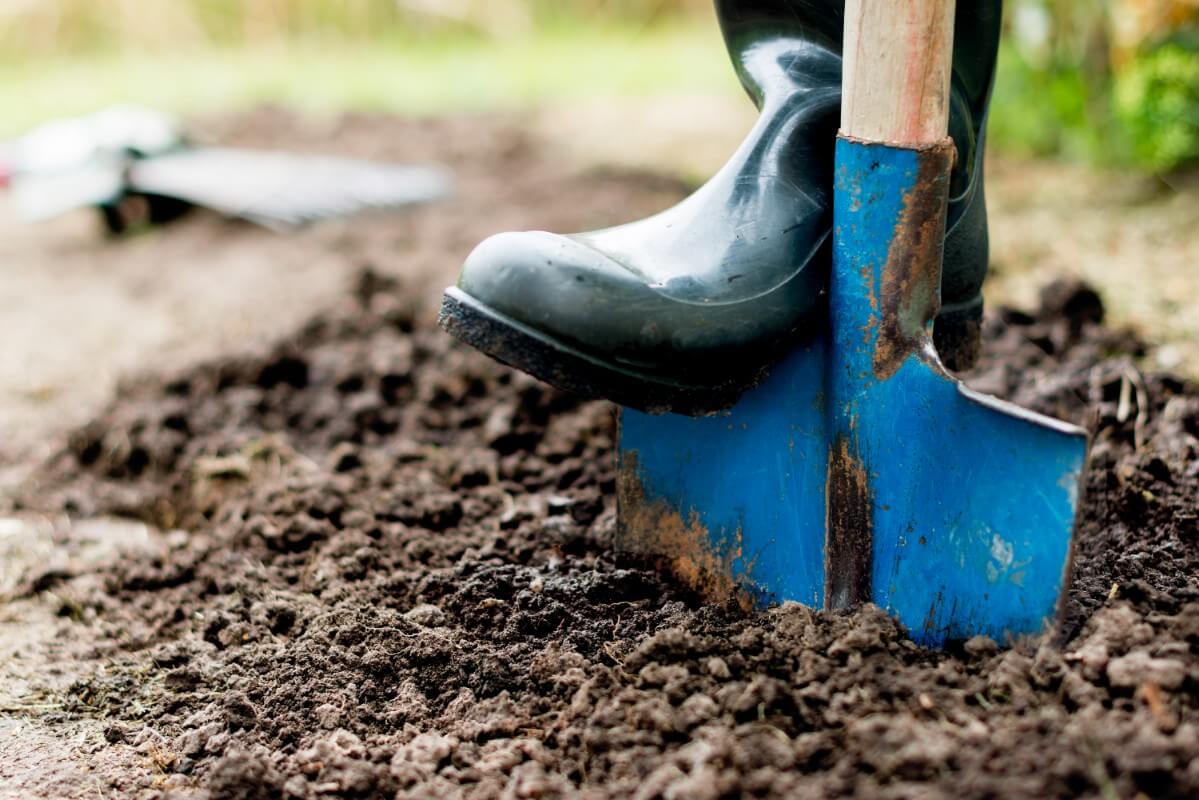
And don’t forget to bring your garden tools in when you’re done in the garden for the day. Rain, irrigation, and drying out from baking in hot sunlight are some of the biggest offenders that speed garden tools’ demise. Take an extra minute each day to bring your tools inside with you and limit their exposure to the elements.
Good daily care throughout the growing season will make cleaning and maintaining at the end of the season much easier, too.
How to Clean Your Garden Tools for End Of Season Storage
Good cleaning for the off-season is very important for giving your garden tools a long life and protecting your investment. That protection starts first with a good final cleaning. The following method will serve you well:
Blast Off First Layer Mud and Dirt
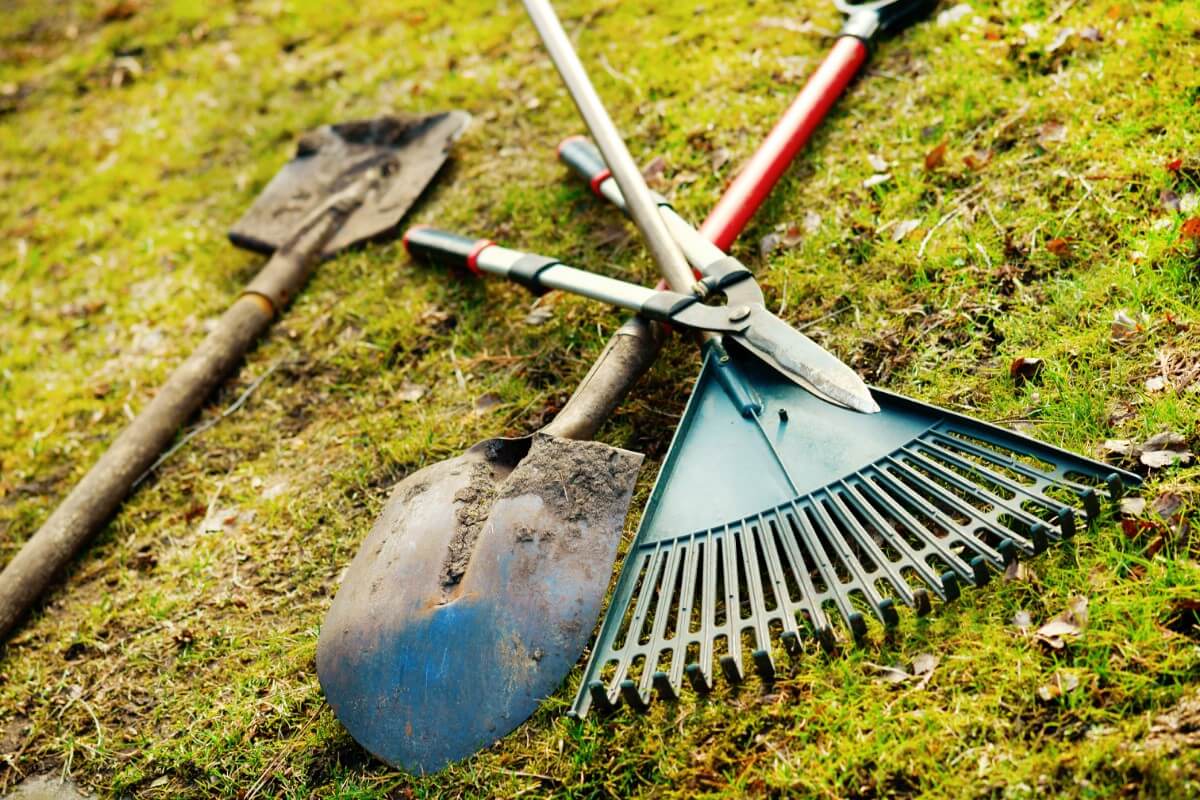
Blast off the bulk of mud and grime. Give your tools a hard, heavy blast with the garden hose. Hit the whole tool, focusing especially on digging or cutting ends where the dirt is probably the worst.
Soak Off Stubborn Second Layer Grime
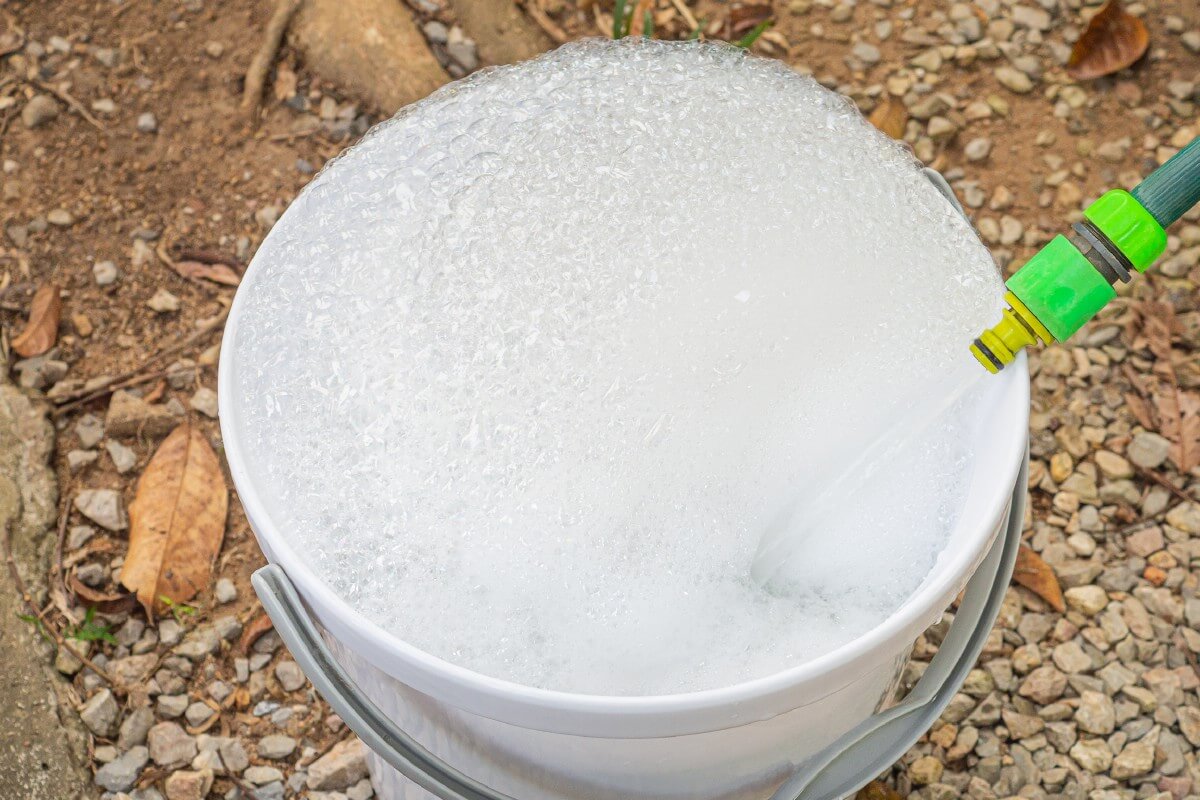
Soak the tool in a bucket of hot, soapy water to clean and get through caked-on dirt and grime. A tablespoon of good dish soap in a five-gallon bucket of water will do the job. Soak for 15 to 20 minutes, rinse, and then dry the tool with a cloth or rag to reduce spotting and rusting.
Now is the time to remove any hardened dirt or sticky sap, too. Scrape off stubborn, caked-on clumps or spots with a putty knife or scraper. A stiff wire brush will work well for this job, too.
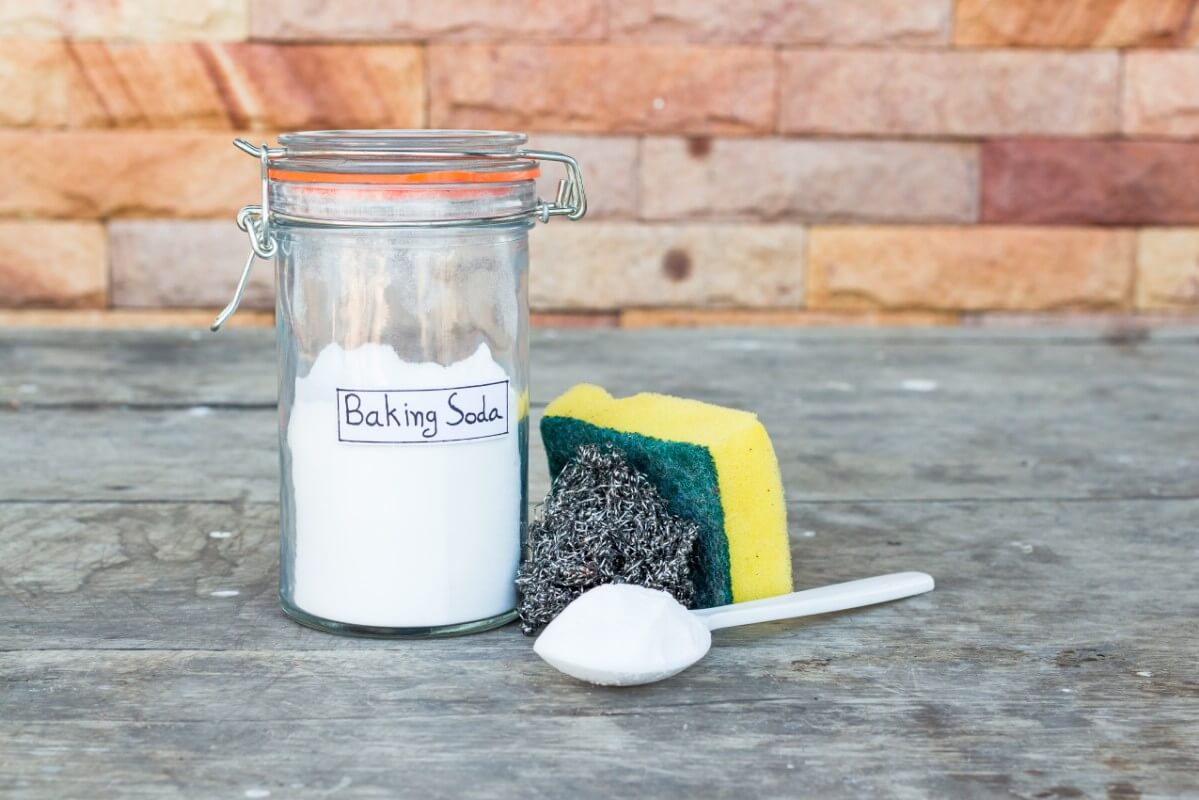
If you need a little extra help, regular old kitchen baking soda will do the trick. It’s cheap, non-toxic, and mildly abrasive so it will help chew through the worst caked-on muck without damaging your tools or their surfaces. It reacts with dirt and grime and helps to break them down, making them easier to remove.
Mix a watery paste of baking soda to water at a ratio of one to one or one to two. Rub the paste into the grime, let sit for 10 minutes (or more), then scrub with a stiff-bristled brush, rag, or light steel wool. Rinse and dry. May repeat if needed. For very stubborn caked-on dirt and sap, you can wet the tool and then pour the baking soda directly all over, then scrub.
(Incidentally, cheap, easy, safe baking soda has a number of helpful uses in the garden; find more ways to use it at the link above.)
Disinfect and Stop the Spread
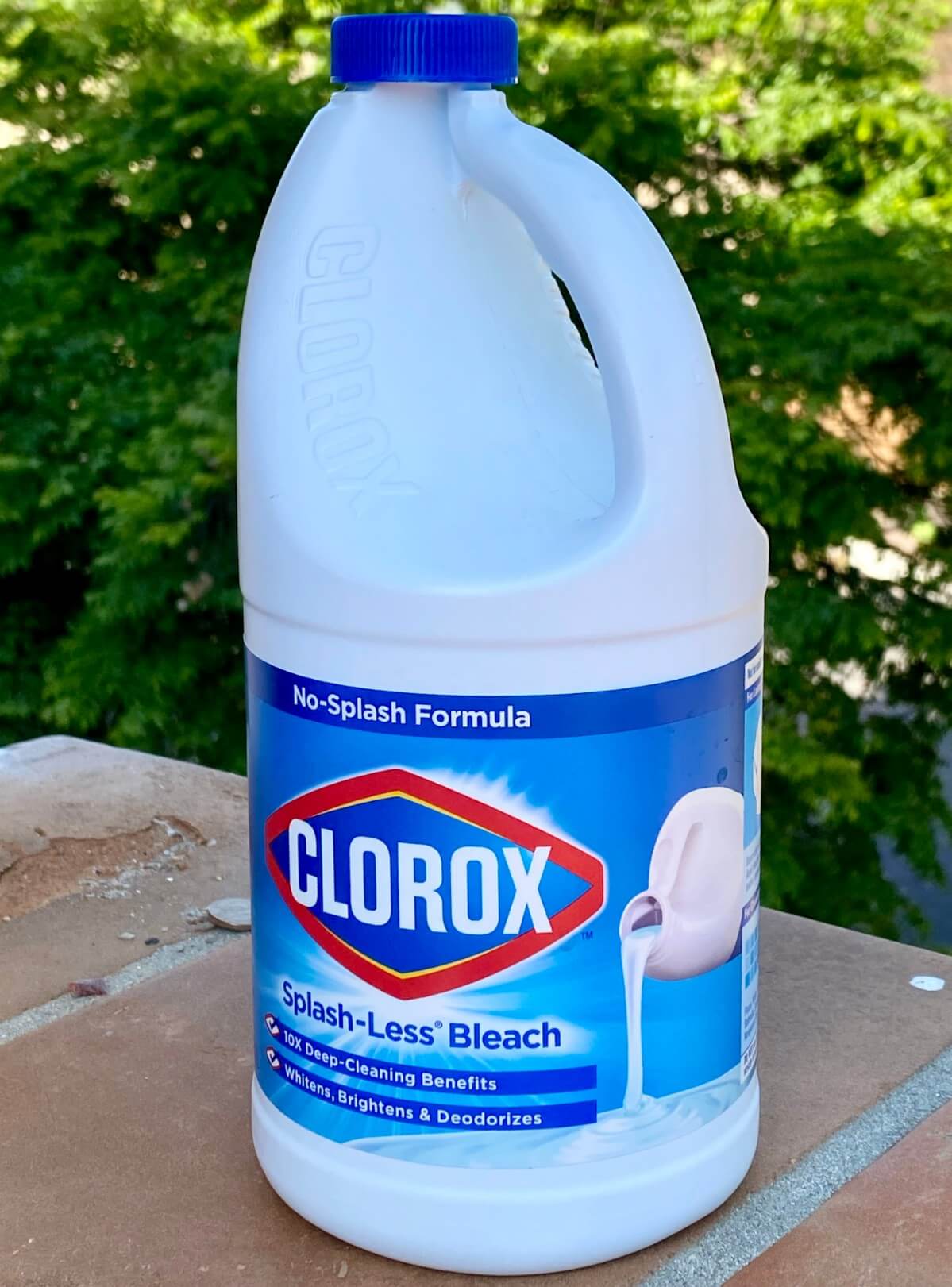
Disinfecting your tools at the end of the gardening season prolongs their life by keeping damaging molds, mildews, and rusts at bay, but more importantly (or at least just as importantly) this step ensures that your tools are not the source of spreading disease from year to year. Whereas outdoor weather will kill off many (but not all) disease spores and pathogens, tools stored indoors in more moderate climates (where they should be) may hold onto some of those microscopic disease-starters. And so, before you put your tools to bed, make sure they are sanitized and disease-free.
Disinfecting tools is simple. You just need to give them some time in a germ-killing solution.
A solution of water and bleach at a ratio of nine to one is one reliable option. Add nine cups of hot water (if available--if not cold from the hose is okay) and one cup of chlorine bleach together in a bucket. If this is not enough to cover the top of the working end of your tool, just repeat the measurement until your bucket is full enough to at least submerge the digging or cutting ends.
If you do not like working with bleach or are looking for something a little safer, less toxic, and more kid- and pet-friendly, you can use vinegar at full strength or mixed 50/50 with water. Again, use enough in a bucket to be able to submerge at least the working ends of your tools.
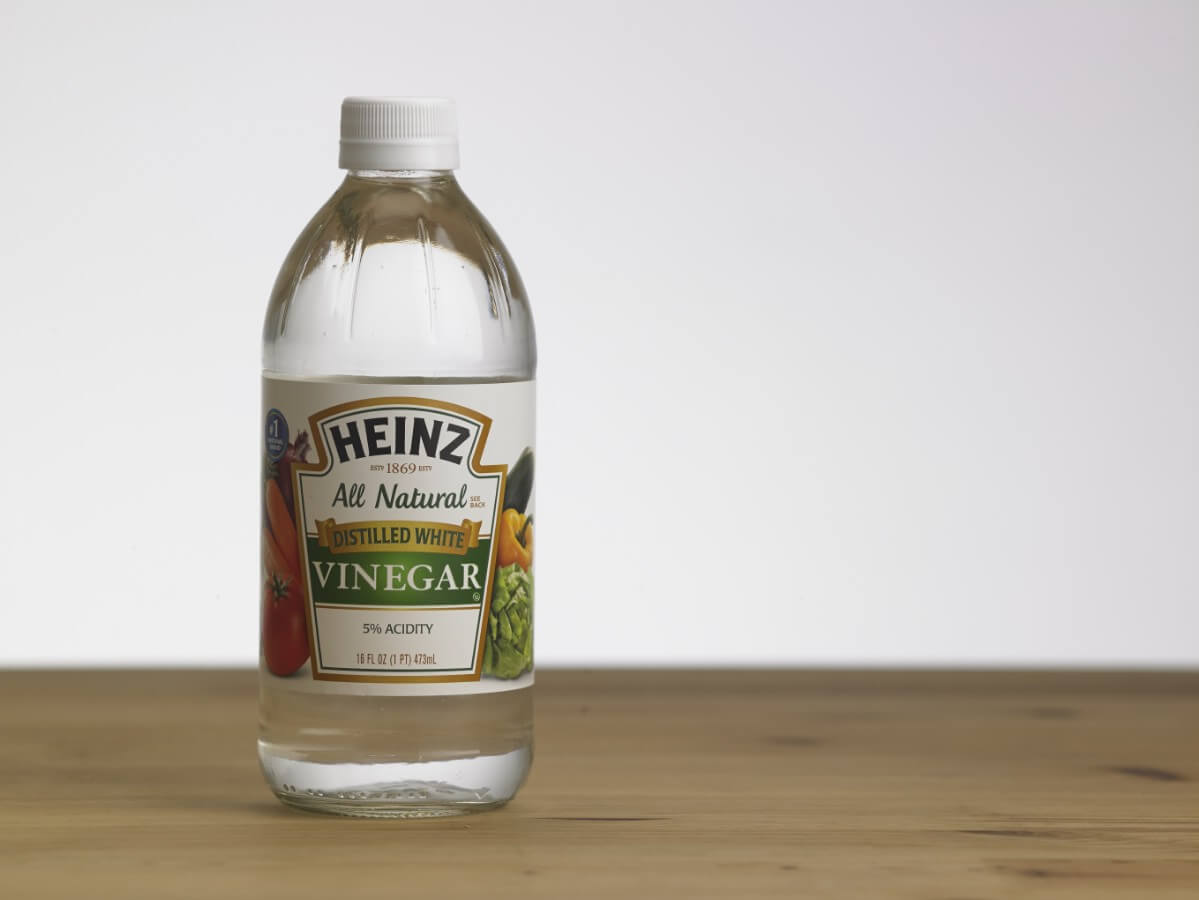
Once you have your disinfecting solution ready, submerge your tools deeply enough to cover the business end completely. Use a rag and wipe up the handle(s). Let soak in the solution for 10 minutes, then remove from the solution and let air dry. Be sure to dry the tools thoroughly to prevent rust.
Obviously, care should be taken whenever you are working with harsh chemicals or ingredients. Be aware, too, that both bleach and vinegar can kill grass and plants—so work somewhere you won’t damage things you care about and dump the solution out somewhere away from your lawns and gardens.
Remove the Rust
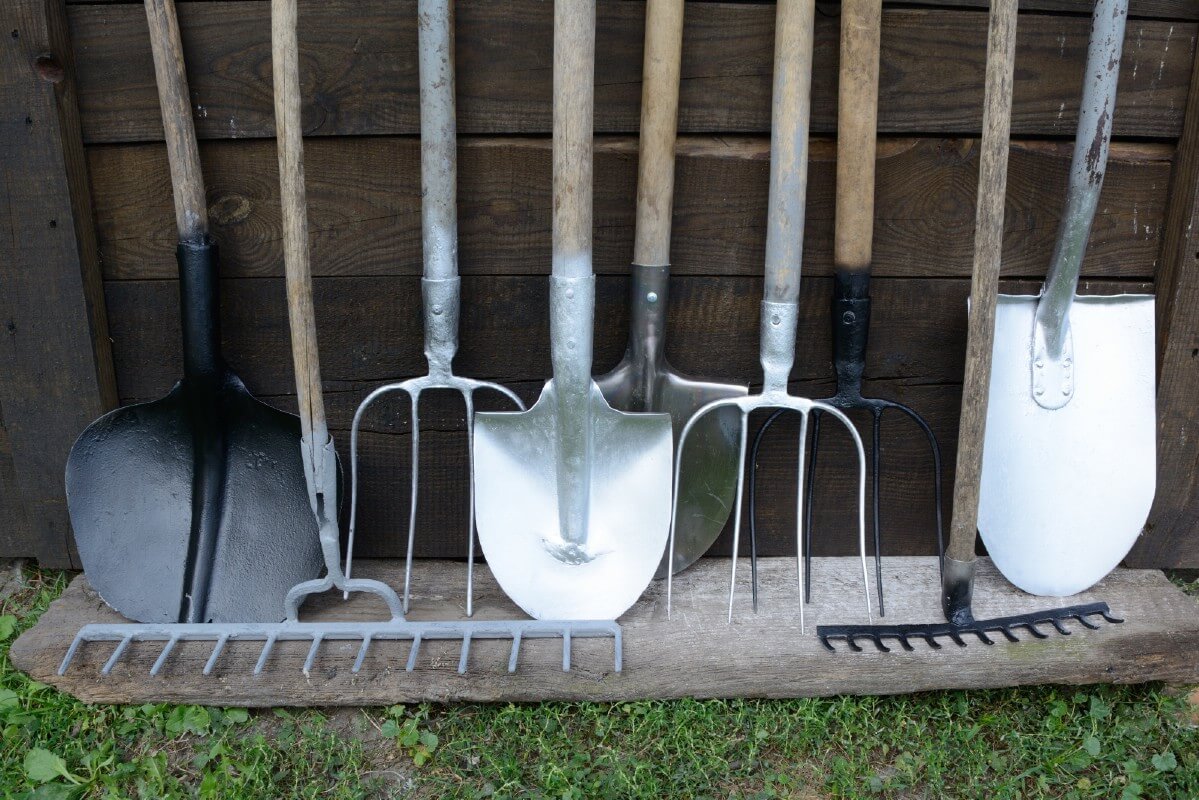
One thing you do not want to do is put your tools away with rust on them. Rust is one of the biggest contributing factors to shortened tool life. Just like rust on your car, it will continue to eat away metal layer after layer, weakening the tool and leaving it prone to holes and breakage.
After cleaning and disinfecting, take a few minutes to do away with any surface rust. Depending on the depth and severity of the rust, there are a few good options.
A vinegar soak will remove tough rust (and has the added benefit of disinfecting as it does so). Soak your tool in full-strength white vinegar or apple cider vinegar. For an added boost, you can add one cup of table salt to each gallon of vinegar. Soak for at least 30 minutes, but you may leave your tool soaking overnight or for up to 12 hours if the rust is particularly difficult to remove.
After soaking, remove the tool and wipe away the loosened surface rust with a rag. For tools that are too large for the soaking bucket, use a spray bottle to apply the vinegar. Reapply several times over the course of several hours if needed.
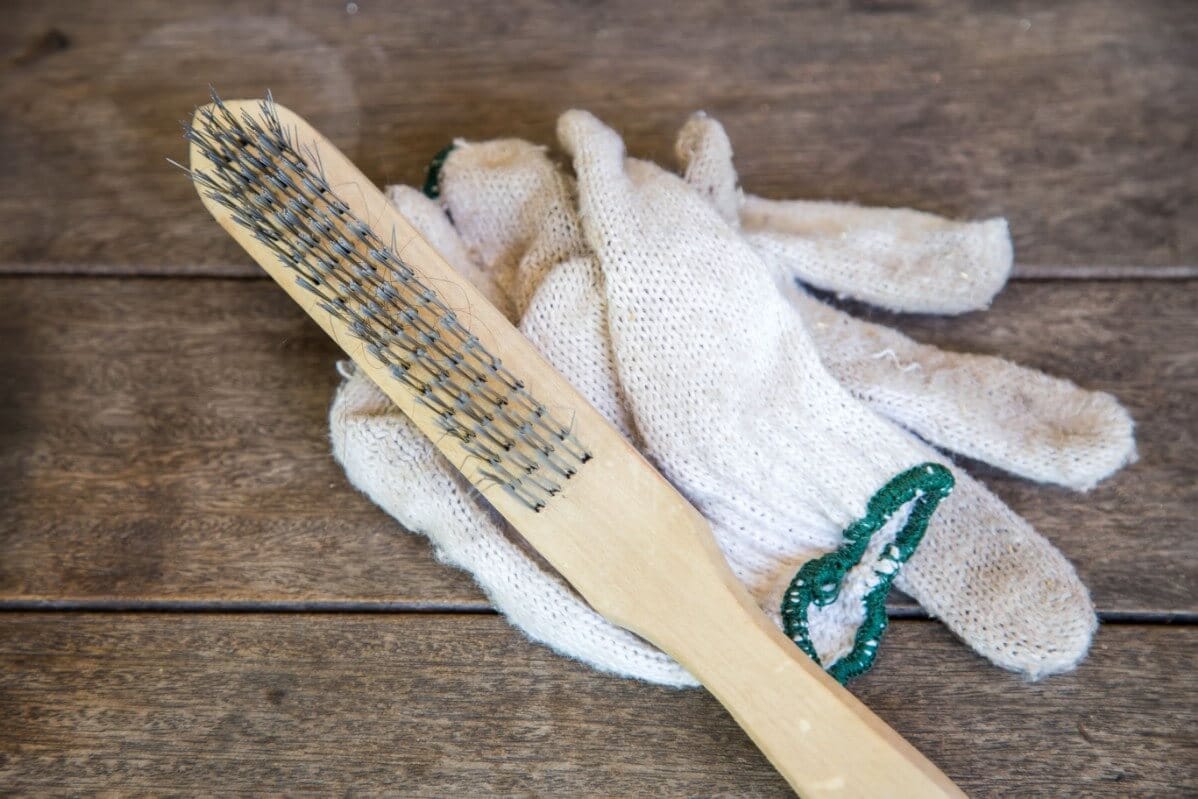
You can also remove rust by scrubbing with baking soda—make a paste or pour the powder on a slightly dampened surface, then work in and scrub the rust away.
Other good tools for removing surface rust include steel wool, a wire brush, or sandpaper. These can be used in combination with vinegar or baking soda if needed.
After you remove the rust, rinse away the loosened rust and dry your tool completely (you don’t want to invite more rusting by leaving your tool wet!).
Sharpen Cutting and Working Edges

With the rust removed, now is the time to sharpen any tools that need sharpening. Pruners, cutters, shears, and other cutting tools are obvious candidates but don’t forget to freshen up the edges of other tools like spades, shovels, weeders, and hoes. Though you may think of these more as digging tools, many are designed with a moderate cutting edge.
Sharpening your tools periodically reduces your work and effort. Sharp, maintained cutting edges do a better job of cutting into hard ground and working through roots and weeds. For things like hand shears, pruners, loppers, and secateurs, maintaining a good, sharp cutting edge is essential not only to function but to plant health. Sharp cutters decrease the incidence of plant injury, making clean cuts that can heal well and minimizing areas that invite disease or cause continued cracking, splitting, and vascular damage.
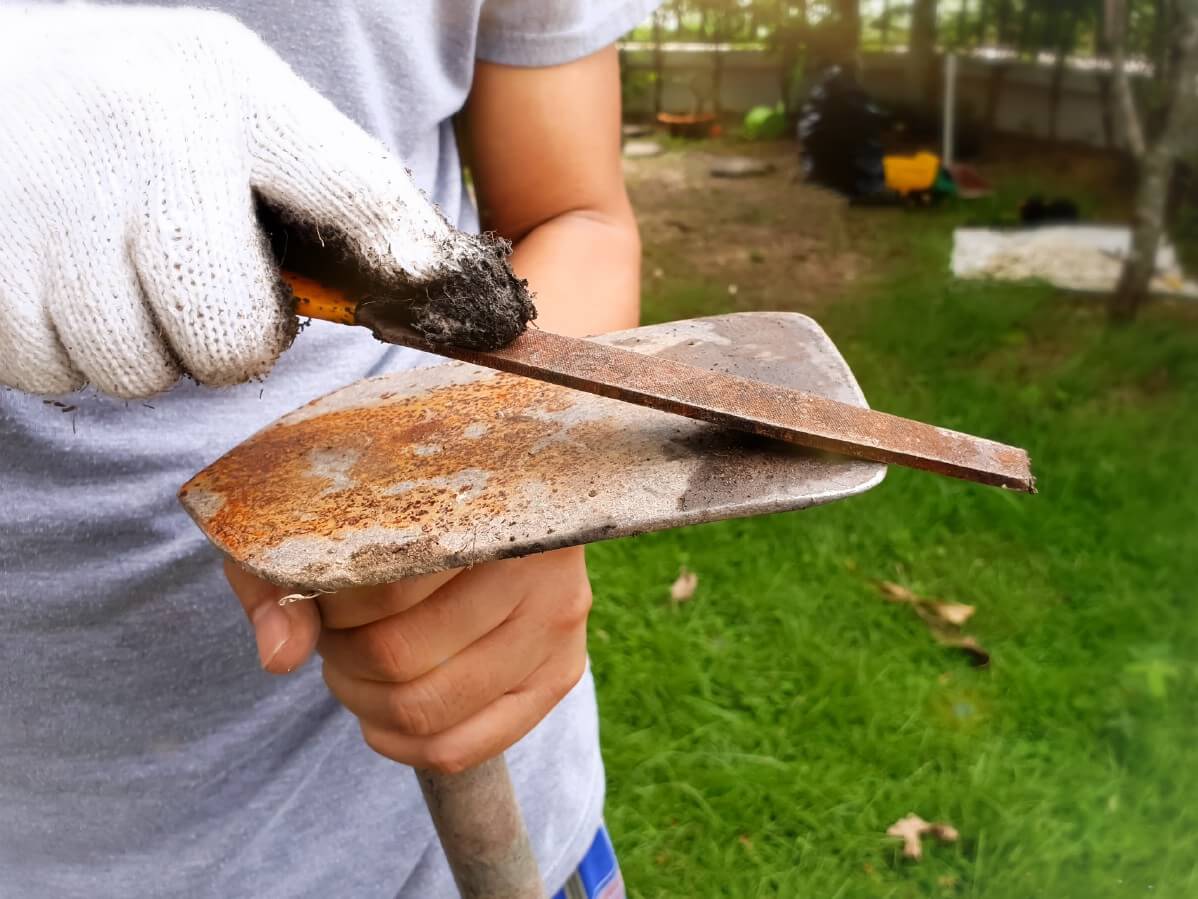
To sharpen your garden tools, first start by wiping the blade or edge down with a bit of machine oil, mineral oil, vegetable oil, or penetrating oil.
For large garden tools like shovels, hoes, spades, and other diggers take a flat metal file to both edges of the working edge. Work the file at a shallow angle, drawing it in one direction until you’ve reached the desired sharpness.
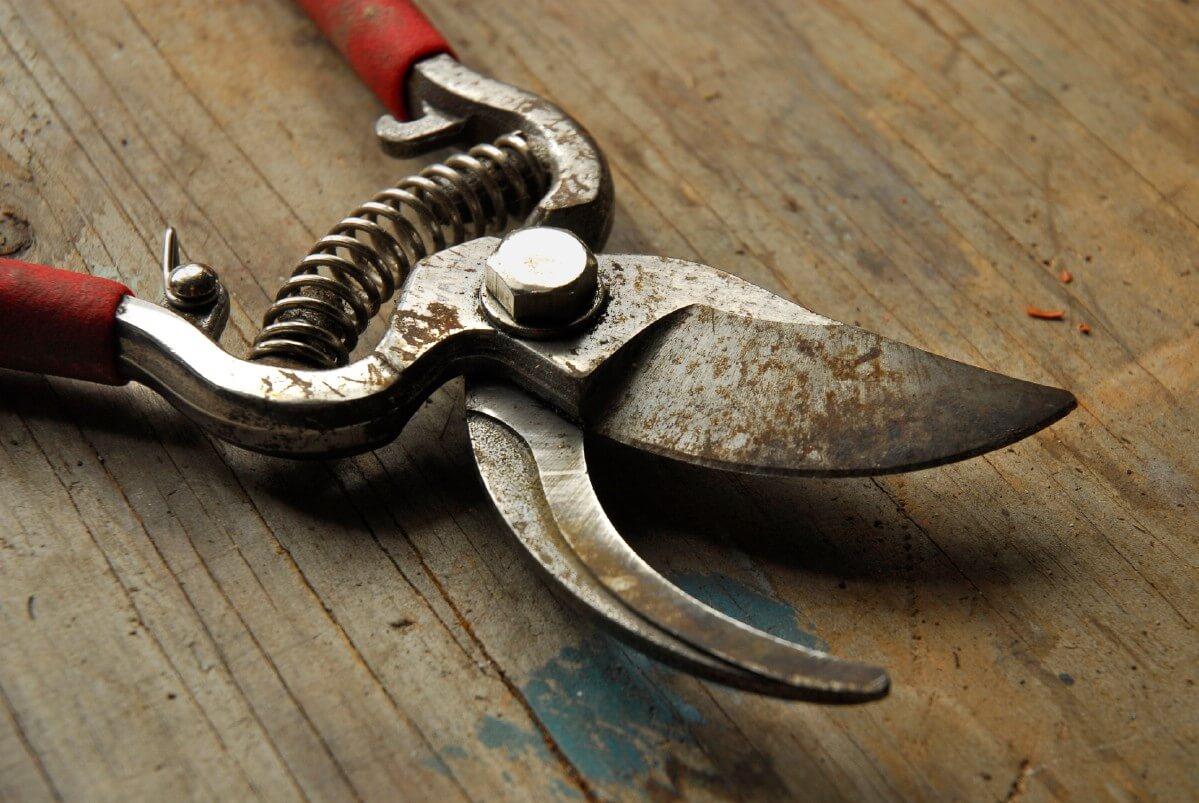
For smaller tools and cutting blades like scythes, use a small file, sharpener, or sharpening stone (whetstone) that fits the blade you are working on. Follow the bevel and angle of the blade and only file the cutting edge. Continue until you’ve reached the desired sharpness.
For all blades, end with wiping the tools down once more with your oiled cloth. This will remove any small metal filings and keep them from wearing against the freshened blade, which can cause pitting and dullness (and can also give you a metal sliver that you do not need).
Always work with care when working with sharp blades.
Handle Care Matters, Too

Maintaining your garden tool handles is just as important as maintaining the working end. Showing your handles some TLC as you put your tools to rest for the winter will prolong their life, prevent loose working heads, and keep them safer for you, too—no more splinters in the garden!
When you’re cleaning and disinfecting your tool heads, give the handles a good clean, too. Usually, a firm wipe-down with a rag and whatever cleaner you’re using will take care of it. When you’re sanitizing your tools, also give the handles a wipe with your disinfecting solution.
For tools with metal handles, give a light going-over with your steel wool and vinegar to stop any rust that might be forming. Pay special attention to joints and places where handles and tool heads come together.
For wooden-handled garden tools, use fine steel wool or a piece of fine or medium grit sandpaper and smooth out any splintering or rough spots.
Tighten Moving Parts

Also take a minute to tighten up any loosening nuts, screws, or hinges on tools with moving parts. Loppers, pruners, shears, secateurs, and the like can all loosen over time. A few turns of a screwdriver, though, and you can keep these tools in prime shape for a long time. If you’re feeling especially handy (and you’re sure you can fit things all back together), take the parts apart and use a little cleaner and sandpaper or steel wool to remove built-up sap, dirt, and grime in the hidden spaces. This is an extra step, but it will ensure your nippers and pruners continue to move freely and work well.
Oil Tool Surfaces
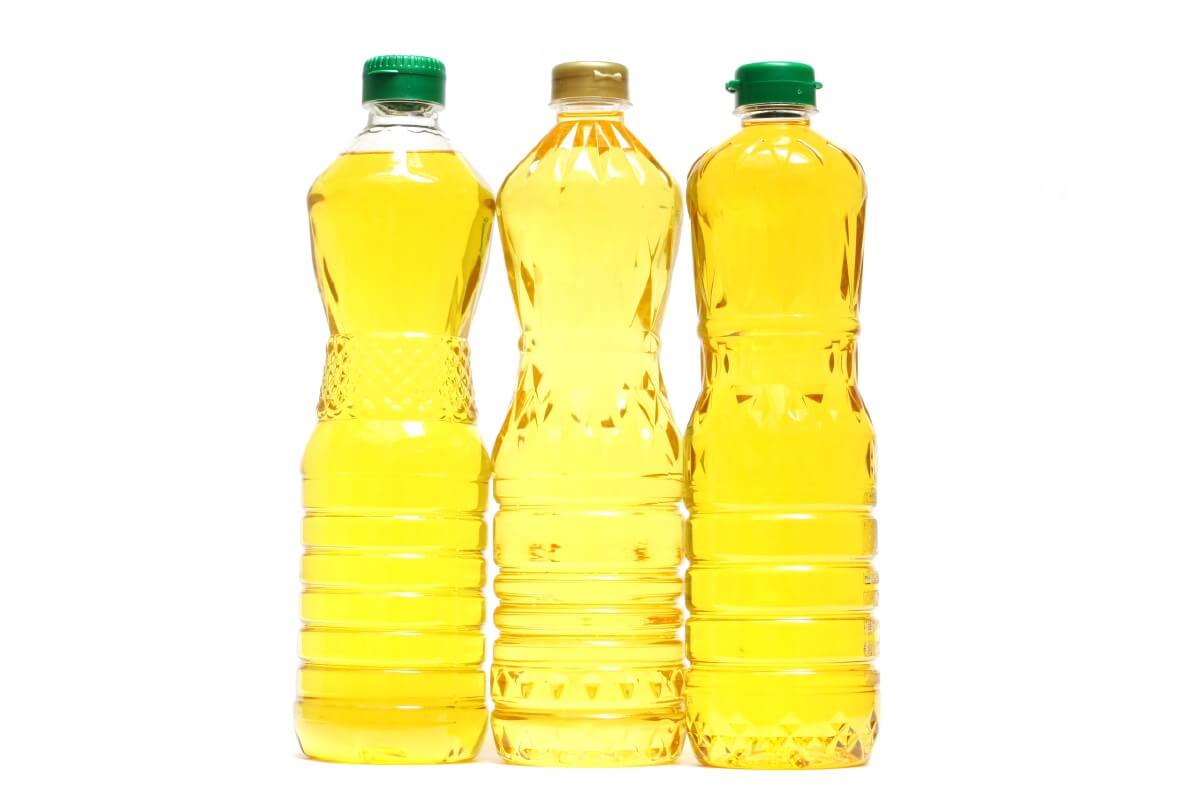
Before tucking them away for the winter, give all of your garden tools a coating in light oil.
Just coat a rag with light oil and wipe the surfaces down well. You only need to apply a good coat—no need to oil them to the point of dripping. Do this for things like shovels, hoes, pruners, shears, and weeders; anything with a metal surface. Be sure to oil both the fronts and the back. This will prevent rust from forming or coming back.
Wipe down handles, too, and do this for both metal and wooden-handled tools. The oil will keep the rust away from metal handles; for wooden handles it will prevent drying out, splintering, and shrinking. Preventing shrinking will keep tool heads tight in their handles, ensuring good working order and longer life. If a tool does lose its handle but the working head is still good, you can often find a wooden replacement handle to further extend the usefulness and economy of your tool.
Finally, for those tools with hinging or moving parts, wipe the working surfaces but also give a drop of lubricating oil to the pivoting or hinging mechanisms. This will keep them moving free and easy for you.
What oils are best for garden tools?
There are several light oils that work well for maintaining garden tools. Mineral oil and teak oil are good options. If you prefer a more natural oil or don’t like the idea of a petroleum-based oil in your vegetable patch, vegetable oil or linseed oil are good choices.
Machine oil, lubricating oil, or penetrating oil (such as the type that is in a spray can, like WD-40), are all good options for oiling moving parts. Spray-on penetrating oil is a quick and easy way to apply oil to surfaces to prevent rust and shrinking, too.
Storing Your Cleaned and Cared-For Garden Tools
Now that your garden tools are washed, disinfected, maintained, and oiled, it’s time to store them for the winter. So now you can just throw them in your garage or garden shed, right?
Not so fast. Good tool storage is just as important to maintaining your tools in good working order to prolong their life. It matters where you store them and it matters how you store them.
Where to Store Garden Tools

It’s most important to find a good home for your garden tools. Don’t leave your garden tools outside in the sun and weather, and especially do not leave them outside overnight. Though this is tempting to do during the gardening season since we’re often just using our tools again the next day, exposure to sun, heat, cold, rain, dew and fluctuating conditions is a recipe for short tool life. Bring your garden tools inside every day when you’re done.
Good storage is even more important at the end of the season. Even a single season left outside through the winter will be enough to do your tools in. Ideally, your tools can live in the same space over the winter as they do during the growing season. This may or may not be the case for you since during the growing season it’s usually enough to get your tools indoors and out of the night and weather. A shed or place undercover that is close by and convenient to your garden maybe your in-season preference. If that place is a good winter storage space, that’s great. If not, find them a winter home.
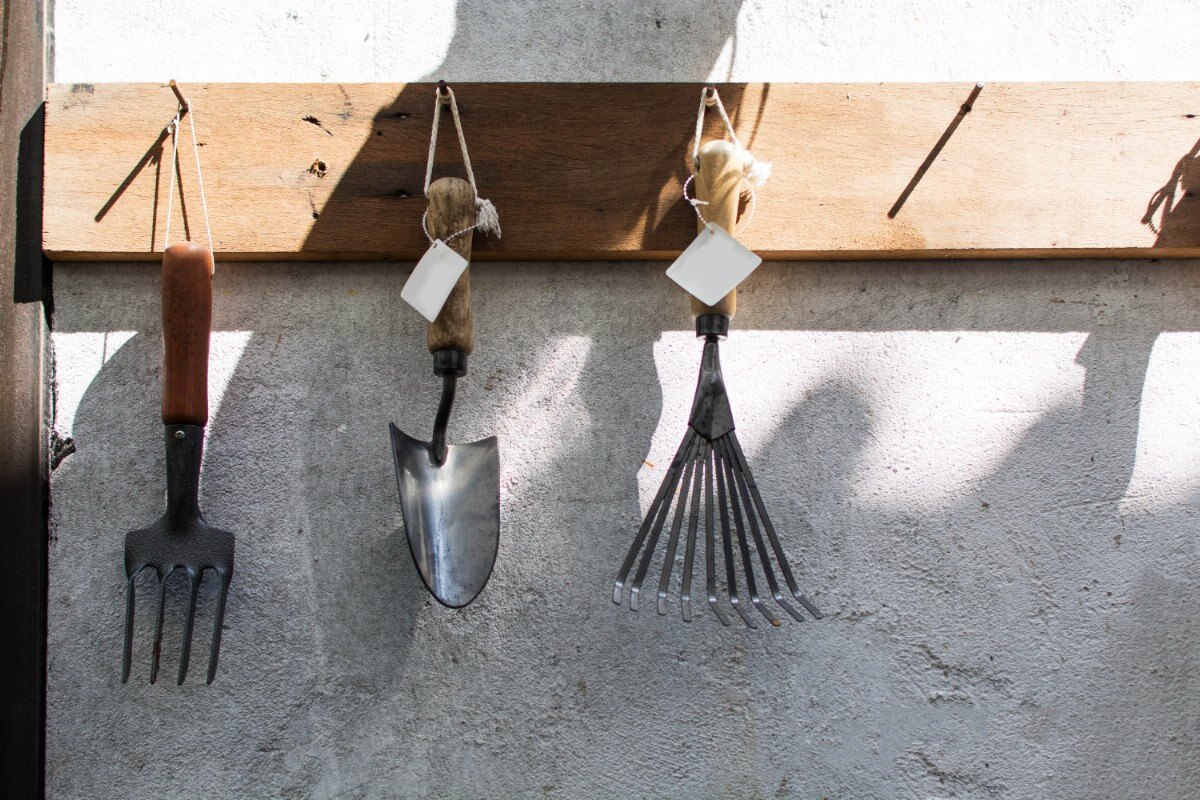
The most important factor when choosing a winter storage space for your garden tools is that the space be weather-proof and dry. If it can be out of direct sunlight and high heat, that’s even better (especially for those tools with wooden handles). Undercover, relatively steady, and out of the elements is what you’re looking for.
Greenhouse space is not always the best place to store your tools (with the exception, perhaps, of those you are regularly using in there). Greenhouses are nothing but heat, light, and humidity. While they are better than outdoor exposure, your tools will live longer in something like a weather-proof garage or storage shed.
How to Store Garden Tools
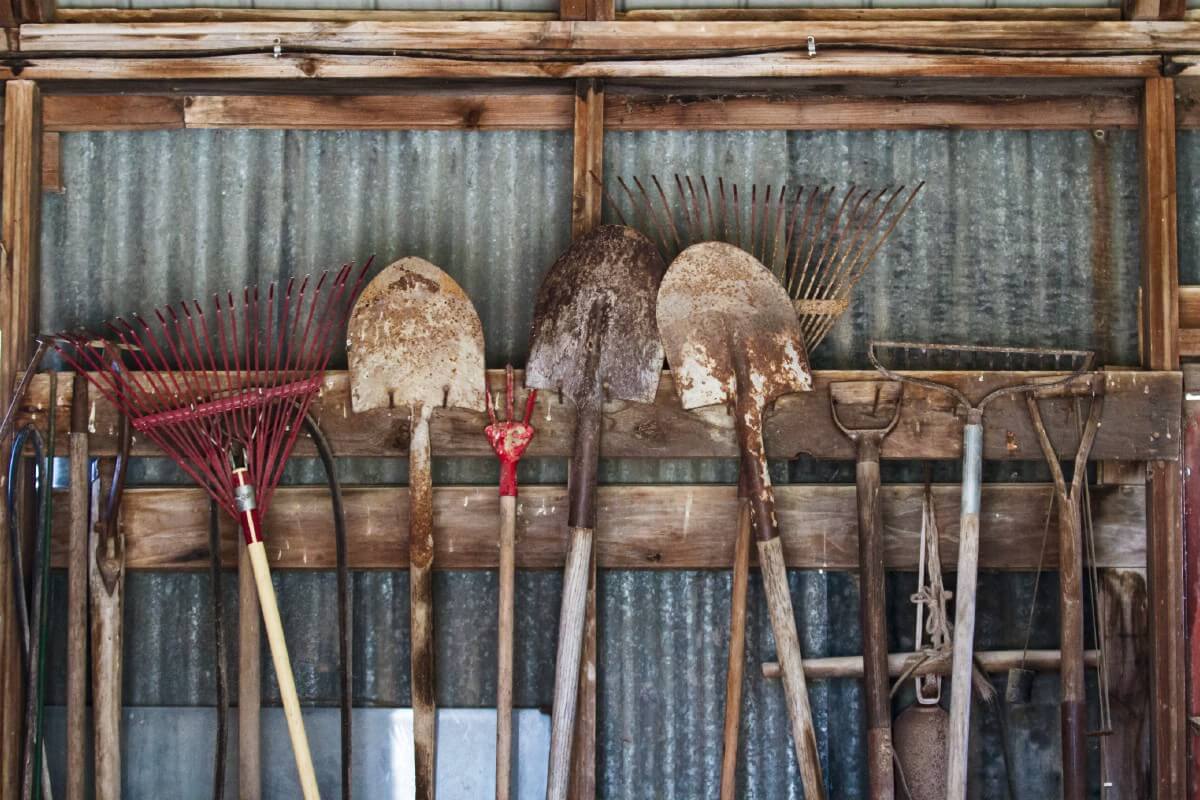
Once you’ve found a good home for your garden tools, take some time and care with arrangement, too. Leaning them in a corner is not ideal if it can be helped. Tools that are leaned for long-term storage often suffer from warping and bowing. They are also easy to get tangled together and risk being knocked around, falling down, getting stepped on, and causing tripping and trampling—not very good for your tools, but even worse for you.
Hanging your tools is best for them. This will prevent dropping and breaking but will also keep the heads up off the floor, high and dry and rust-free, while protecting them from bending, bowing, and warping. Hangers don’t need to be fancy as long as they are secure (though you’re sure to find some great options at your local hardware store). Long nails can do the trick or a pegboard with hangers (this option works nicely for smaller hand tools). Hanging your tools also has the advantage of keeping them well organized, visible, and easy to find when needed.
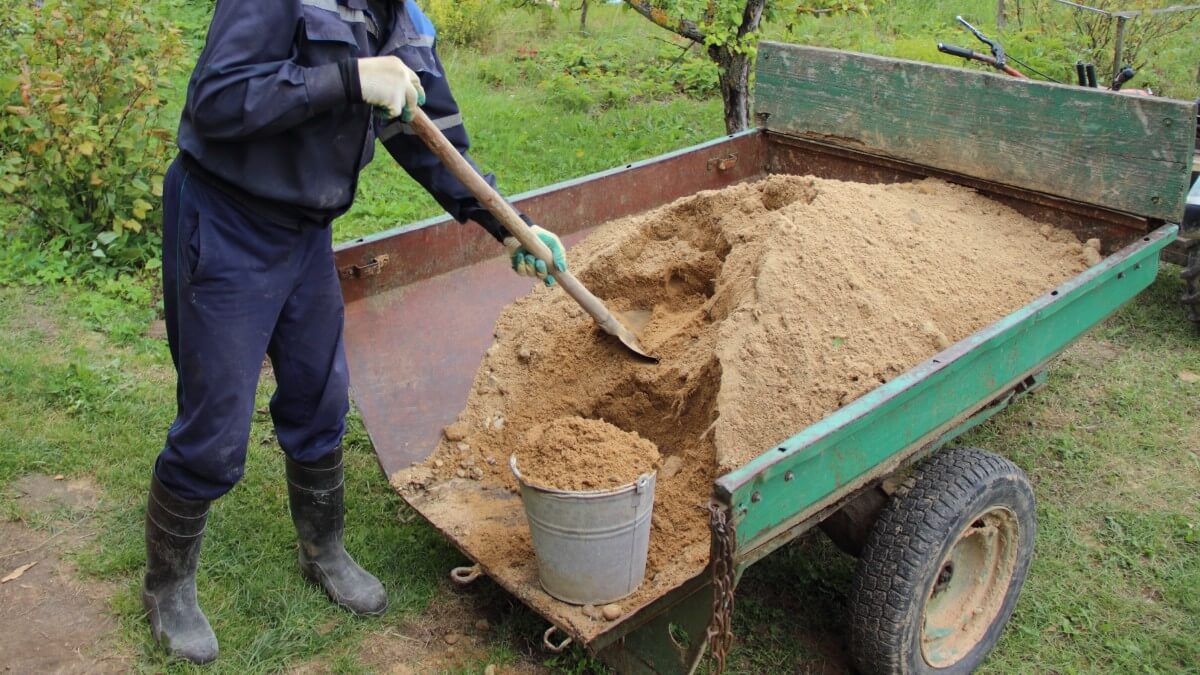
You can also use the bucket of sand with vegetable oil trick that we talked about in the daily care section for long-term winter storage. This works better for small tools like trowels and hand-held forks. The sand will keep tools upright and out of the way, while the oil keeps them from rusting.
Good Garden Tool Care Saves Time and Money

Taking a few hours at the end of each garden season to clean and maintain your valuable garden tools will serve you well. Well-maintained tools make gardening work easier and that saves wear and tear on you, too. Well-maintained tools last longer and save you money and you won’t have to repair or replace your tools nearly as often—all things that take up not only money but also time. Keeping your tools in good repair will keep you doing what you love to do—enjoying that precious time in the garden! Keep growing!

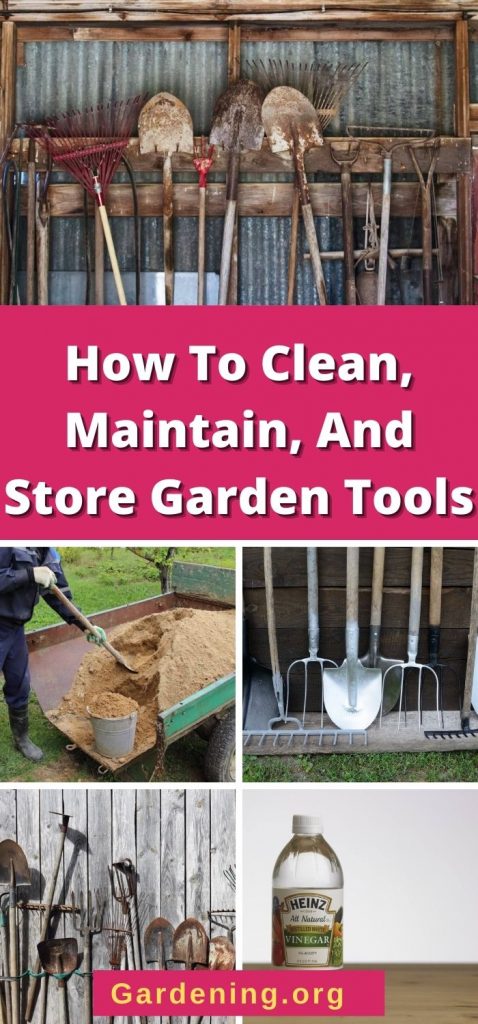

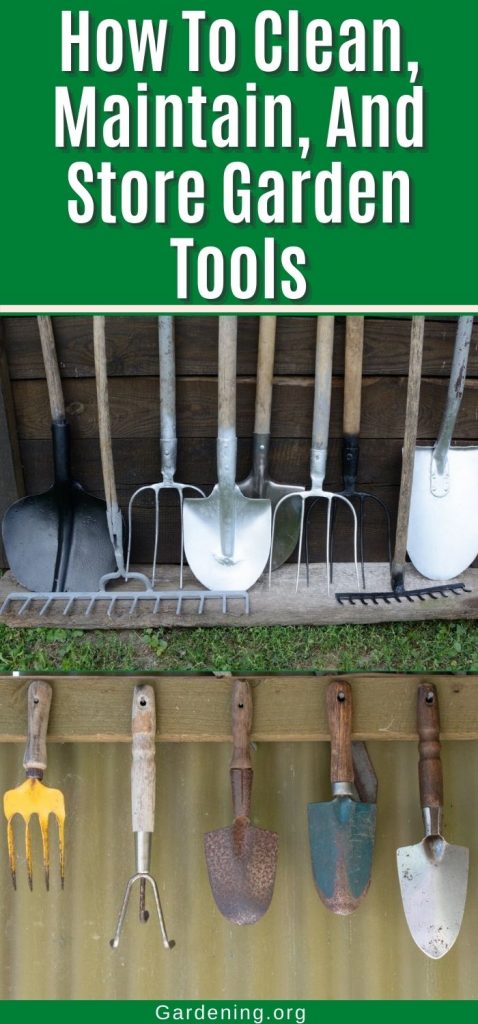





Leave a Reply